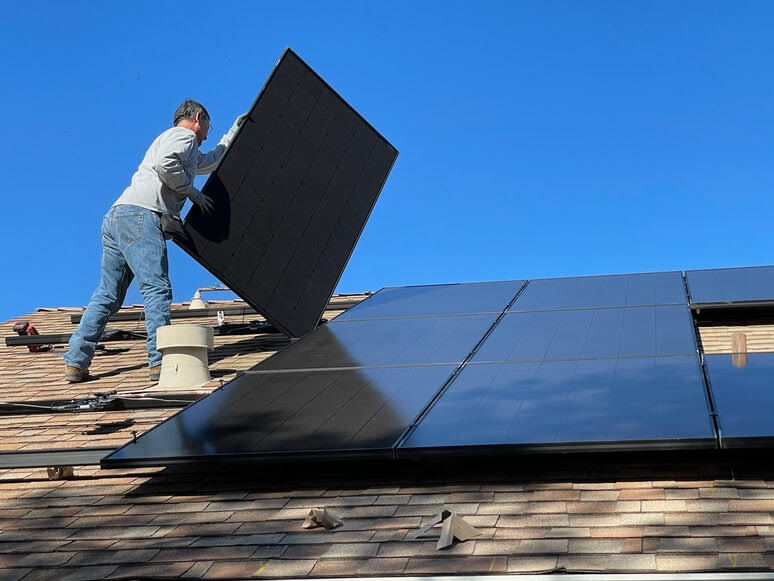Solar air conditioners are considered one of the holy grail technologies because they harness energy from the brutal sun that causes unbearable room temperatures and use it to cool indoor environments. Homeowners in hot and humid Asian countries can now invest in solar air conditioner units that allow them to achieve comfortable indoor spaces without increasing their carbon footprint.
And like any other innovation, the journey towards the realization of solar air conditioners has been bumpy. Innovators were up against two major technical challenges that are far from trivial. The first being that the sun doesn’t shine with high intensity all day. So, unless a homeowner invests in a solar storage system, their solar cooling unit cannot stay operational round the clock. The second challenge is these unit’s great reliance on electricity to serve their purpose.
Fortunately, innovators’ tireless efforts to advance the units’ performance have bore fruit and homeowners can pair their solar air conditioners with batteries to make the units more practical. What’s more, mini-split heat pumps now have high speed compressors which makes these units less reliant on electric power. You can now make a one-off investment in a solar air conditioner and enjoy long-term savings on monthly electric bills.
That said, we can’t be oblivious of the fact that solar air conditioner units, like any other piece of equipment, experiences gradual deterioration in efficiency the longer you use it. This article will highlight the three common problems with solar air conditioners and how you can combat them.
1. Weather Damage
Even the best solar air conditioning unit in the market is bound to sustain weather damage considering the system’s photovoltaic cells have to be installed outside. And you can’t shield them from the elements because then they won’t be able to harness maximum solar energy when the sun is out. What’s more, the fact that they’re stored on roofing systems means you won’t have time to cover them when there are high winds or hail storms because you have to stay inside for coverage yourself.
Since the very intention for installing solar panels outside is what encourages weather damage, it’s a quagmire without a solution. Ultimately, the longer your photovoltaic panels are exposed to the sky, the more weather damage they sustain. Here are the solutions for your solar panel system sustaining weather damage:
- Budgeting for Solar Panels Replacement
You have to set aside a budget for solar panel replacement to maintain the functionality of your solar air conditioner unit. Continuing to use your solar air conditioner with its depleted efficiency prevents you from getting the most from your investment. You’ll end up relying more on electricity from the grid to maintain comfortable indoor spaces when the intention to invest in a solar powered air conditioner was to achieve the exact opposite. In essence, failure to restore damaged solar panels makes the whole investment counterintuitive.
- Protecting Your Solar Panels from Rust
Constant exposure to moisture can also encourage oxidation which creates rust that corrodes the surface of your solar panel system. If the rust is left to accumulate over an extended period, the corroded solar panels will likely sustain irreparable damage due to the electrical resistance that builds up between the photovoltaic cells. The connections between the cells will overheat and a large section of your solar panel system.
To avoid oxidation from resulting in rust, you should allow solar panel technicians to routinely maintain your solar panel system. They’ll ensure that the surface of your solar panels are clear of any corrosion that might result in total damage.
Overall, the only way to combat weather damage is to proactively inspect your solar panel system for any arising issues and replace photovoltaic panels that have outlived their usefulness. This way, you can restore the system to its proper power and continue leveraging your solar air conditioner to lower monthly energy bills.
2. Poor Photovoltaic Panels Placement
The orientation of solar panels on your roof determines how much solar energy the system can harness. So, when you decide to go green, be sure to hire experienced solar panel installers who have mastered the angling of photovoltaic panels for maximum exposure to sunlight.
Choosing to install your solar panel system without professional guidance will most likely waste it’s potential to harness solar energy because you won’t know how to optimize placement. Engaging professionals on the other hand, guarantees that your solar panel system will extract the necessary energy to power your solar air conditioner unit. This is an easy problem to avoid because as long as you let experienced solar panel technicians take care of the installation, you’ll get the heating efficiency you expect from your solar air conditioner.
3. Improper Voltage
Another reason to let professionals set up your solar air conditioner unit is to ensure they properly calibrate the solar panel system to align with the cooling unit’s voltage consumption. Improper voltage results in power outages that can take days to rectify and this will not only affect your indoor comfort, but your household’s functionality as well.
Wrapping Up
Now that you know what you’ll be getting yourself into when you invest in a solar air conditioner unit, you can proceed to make this financial commitment, knowing the proactive preventative measures you should take to get the most out of your unit.



